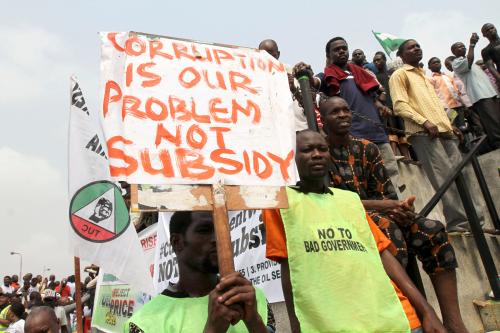For the best part of two years, the U.S.-China trade war has sucked oxygen out of trade policy deliberations. While this drama continues—witness the bizarre signing ceremony of the Phase One deal at the White House last week—it is worth recalling that U.S.-China trade accounts for less than 5 percent of world trade.
That is not to diminish the U.S. China trade war—rather, it begs the question of whether other governments have copycatted the targeted tariff hikes by Beijing and Washington? Has the populist turn in national politics in many countries translated into a marked shift away from open trade?
Recently we published an evaluation of trade policy dynamics after three years of populism. Since January 2017, a total of 6,755 changes in policies toward international trade, cross-border investment, data flows, and labor migration were documented worldwide. To get the full picture we considered trade reforms as well as protectionist steps. Where relevant, we matched a policy change to the most fine-grained United Nations trade data available, to gauge the amount of trade affected.
Here we summarize three of our most important findings.
1. There is a shift away from open trade
Worldwide, from 2017 to 2018, the total number of new policies introduced that harmed foreign commercial interests jumped two-thirds to 1050. Last year saw a comparable level of new trade distortions introduced. Meanwhile, the number of new trade reforms fell 22 percent last year to a total of 258. Such counts—which are the metric the World Trade Organization judges G-20 trade policy by—suggest a marked shift away from open trade. But does this finding carry over to the total value of trade implicated?
Figure 1 plots month-by-month the shares of world goods trade affected by different policies introduced since January 2017. We refer to the period since then as “the populist era.” (Protectionism introduced before 2017 does not count towards these reported totals, and policy interventions that lapse count only in the months when they are in force.)
Figure 1. Targeted trade policies are a sideshow
Source: “Going It Alone? Trade policy after Three Years of Populism”
By mid-November 2019, 40 percent of world goods trade was affected by populist era trade distortions. A key finding is that the biggest trade distortions are not those that target specific trading partners. Once proper corrections are made for duration, only 2 percent of world goods trade were affected by tariff increases that target a single trading partner. In contrast, by the end of last year over a quarter of world goods trade were being distorted by the tax breaks and dubious financial terms offered by governments to their exporters.
Targeted trade policies of the type deployed by Beijing and Washington are a sideshow in comparison to the scale of commerce affected by market-distorting export incentives. Media coverage notwithstanding, the bigger trade problem is the attempt to steal sales in markets abroad from foreign rivals, not denying selected trading partners access to one’s own markets.
Using data on another 18,000 or so earlier public policy interventions affecting global commerce, we compared the current populist era with two others from the recent past. Specifically, we compared the shares of global goods trade affected by trade distortions in the three years beginning from January 2014 (i.e., the years before President Trump took office) and the three years begining from January 2009 (the early years of the global financial crisis). Figure 2 plots the build-up of trade distortions, as measured by the share of goods trade covered, for all three eras.
2. Trade protections are currently more concentrated
Our second major finding is that, remarkable as it may seem, the amount of goods trade affected by trade distortions during the current populist era is 10 percentage points lower than during the three before President Trump took office and during the three early years of the global financial crisis. Taken together with the count statistics mentioned earlier, this finding implies that the current populist era has seen more protectionist acts concentrated on a significant, but smaller, share of global goods trade than in earlier years.
Figure 2. Populist era trade policy affected a narrower base of global trade
Source: “Going It Alone? Trade policy after Three Years of Populism”
3. Trade reform worldwide has fallen by half
What of trade reforms? Figure 3 produces a variant of Figure 2 but for the public policy reforms affecting trade in goods. Our third major finding is that, compared to the three years before the election of President Trump, the share of world goods trade liberalized worldwide has fallen by half. In fact, the ongoing populist phase has seen as little trade reform as the first three years of the global economic crisis.
Worldwide the past three years have witnessed a profound shift away from the level playing field. Restoring the trading conditions of 2016 goes well beyond reversing the damaging tariff hikes by the American and Chinese governments. Seen in this light, last week’s Phase One deal was a drop in the bucket.
Figure 3. The scale of trade reforms collapses
Data source: “Going It Alone? Trade policy after Three Years of Populism”









Commentary
How has global trade policy shifted over the past 3 years?
January 23, 2020